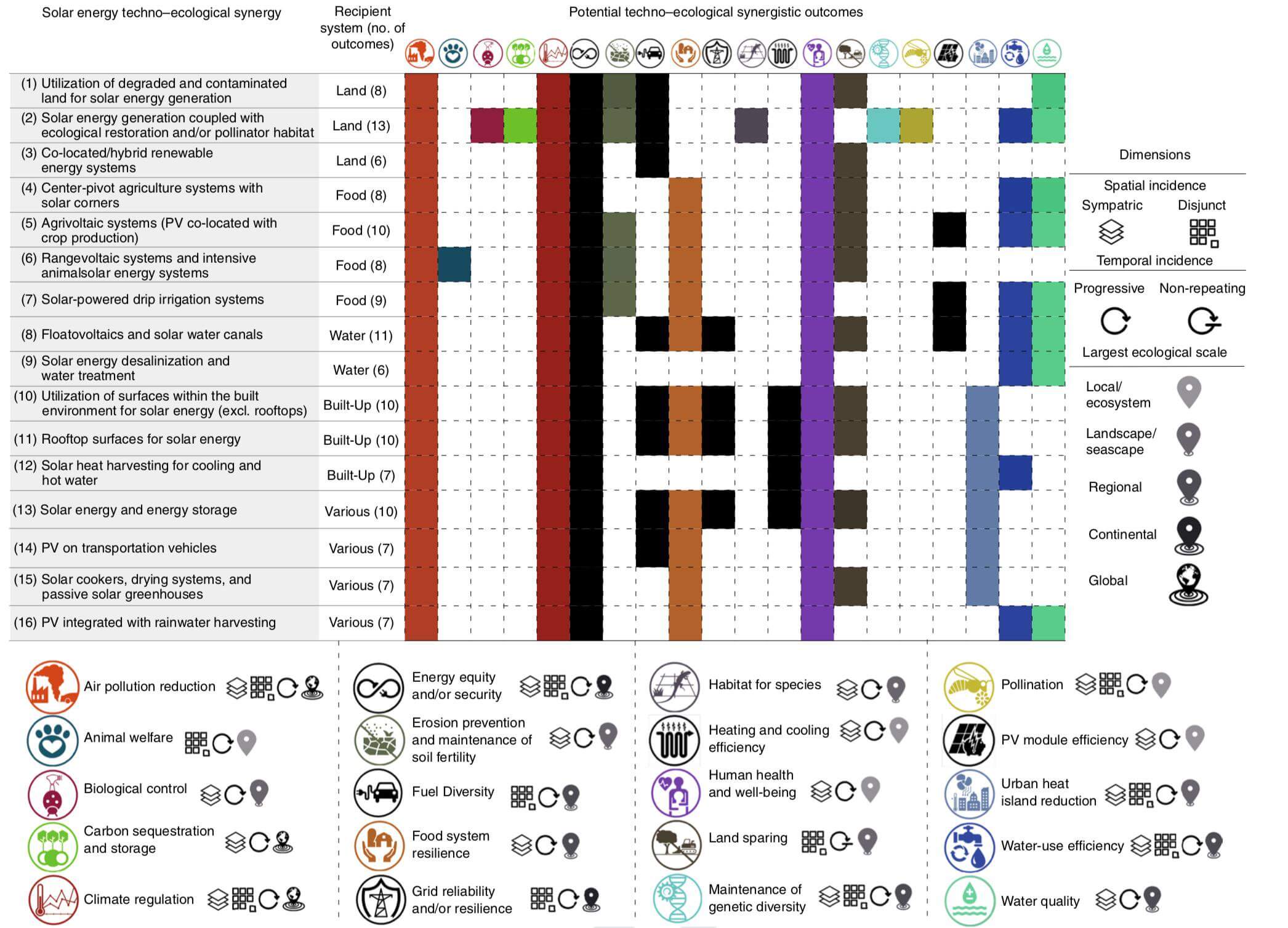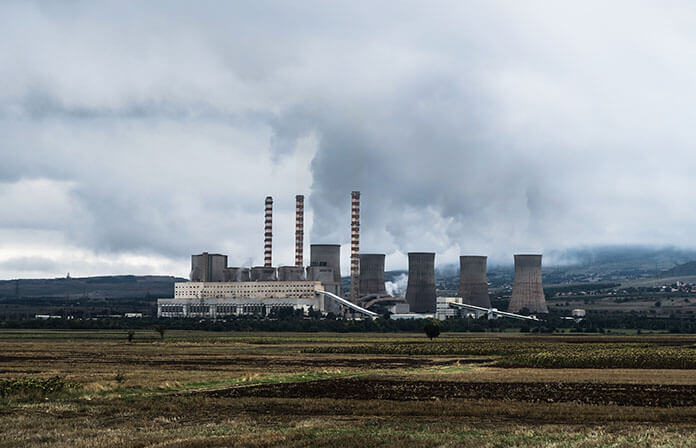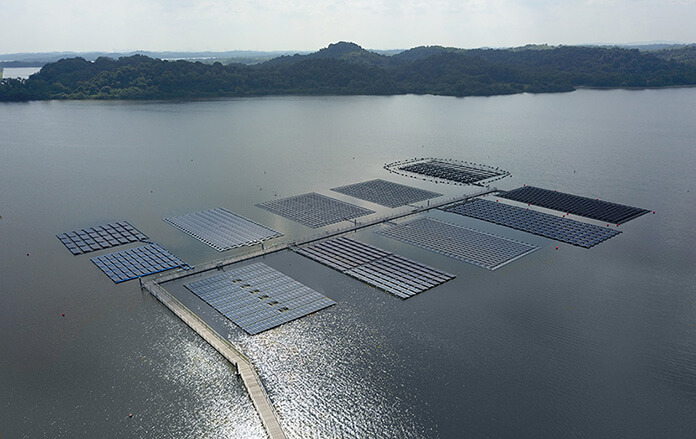Sustainable energy access and conservation of wild species and biodiversity rank at the top of the international community of nations’ strategic agenda. An international group of scientists recently published a conceptual framework, the first of its kind, that could reconcile the trade-offs between solar power project development and ecosystems and biodiversity conservation.
In the peer-reviewed research paper, Techno-ecological synergies of solar energy for global sustainability, the research team identifies 20 overlooked advantages of distributed solar energy. These range widely and deeply, from greater solar panel energy and agricultural productivity and reduced use of polluting inputs, effluents and emissions to remediation and repurposing of contaminated land and water resources, carbon sequestration and water, native species and habitat conservation, including that for pollinators, research authors from the University of California, Davis (UC Davis) and U.S. Center for Biological Diversity (CBD) explain.

Joined by researchers from 11 other organizations, the study authors set out “a framework for understanding more completely, and ultimately quantifying, the benefits of solar energy” that they’ve dubbed Wild Energy. “The first step in creating a wild-energy future is understanding the true value of solar,” said research project organizer and lead report author, Rebecca R. Hernandez, an assistant professor at UC Davis’ John Muir Institute of the Environment.
By valuing all the benefits of renewable energy, we can start to build an energy system that’s beneficial for people, wildlife and wild places.
Stemming climate change and the Earth’s Sixth Great Extinction
“The U.N. recently released a report (its latest Millennium Ecosystem Assessment) explaining that we’re in the worst extinction event in human history, with 1 million species on the verge of extinction due to human activities,” Ryan told Solar Magazine.
This loss of species is a tragedy in itself. The U.N. report also found that this level of biodiversity loss has, and will continue to have, grave economic, sociological and environmental impacts to human communities such as threats to food security and water scarcity.
Our dependence on fossil-fuel energy is driving climate change, ecosystems and natural resources degradation and loss the world over, Ryan elaborated. “Reliance on fossil fuels is the primary driver of the climate crisis, which drives threats like global temperature rise, the frequency and intensity of extreme weather events, coastal flooding, rapid Arctic warming and polar ice loss, mass biodiversity loss, threats to freshwater resources, declines in food security, and ocean acidification,” she said.
Ryan cited the loss of life and livelihoods due to more frequent and intense hurricanes, wildfires and floods, such as the flooding caused by Tropical Storm Barry in the U.S. state of Louisiana just recently, as “acute and urgent” examples of how the costs of and threats associated with our dependence on fossil-fuel energy are rising.

“Both here in the United States and on a global scale, those who are and will continue to suffer the most due to our dependence on fossil fuels tend to be those who are least responsible for it,” Ryan said.
Solar power project development that yields net socioeconomic, biodiversity and ecosystems benefits
Accelerating the pace of distributed solar energy project development could go a long way towards reconciling the trade-offs and conflicts of interest between sustainable energy and socioeconomic needs and goals and conservation of biodiversity, species and ecosystems. Any solar project development framework should tightly integrate ecological and wildlife conservation principles, methods and analytical tools , the researchers assert, a concept that, after many years of advocacy by physical and social scientists, is only just starting to gain some genuine traction among industry players, policymakers and government leaders.
